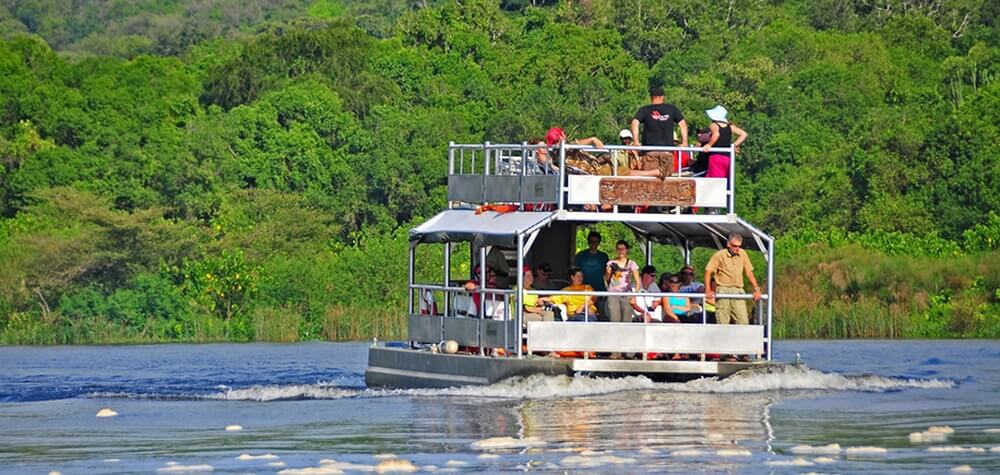Explore Uganda
Queen Elizabeth National Park, located in southwestern Uganda, is a diverse and captivating wildlife sanctuary that spans approximately 1,978 square kilometers. Renowned for its scenic beauty, abundant wildlife, and cultural heritage, the park stands as a testament to Uganda’s commitment to conservation and sustainable tourism.
The park is situated in the Albertine Rift Valley, offering a varied landscape that includes sprawling savannahs, dense forests, and shimmering lakes. It is bordered by the dramatic Rwenzori Mountains to the north, providing a stunning backdrop to the expansive vistas.
Queen Elizabeth National Park is a biodiversity hotspot, home to a remarkable array of wildlife. Large mammals, including elephants, buffalos, and Uganda kob, roam the savannah, while predators such as lions and leopards add to the park’s ecological richness. The Ishasha sector, located in the southern part of the park, is famous for its tree-climbing lions, a unique behavior exhibited by some prides in the area.
The park is a haven for birdwatchers, with over 600 bird species recorded. The Kazinga Channel, a natural waterway that connects Lake Edward and Lake George, attracts a variety of water birds, including flamingos, pelicans, and numerous species of kingfishers.
The Kazinga Channel is a focal point of the park’s wildlife activities. Boat safaris along the channel provide a unique perspective, allowing visitors to witness large concentrations of hippos, crocodiles, and diverse birdlife. The channel is a vital water source, attracting a constant flow of animals that come to drink and cool off.
Game drives in Queen Elizabeth National Park offer an opportunity to explore the vast landscapes and encounter the diverse wildlife. The Kasenyi Plains are particularly known for their large herds of herbivores, providing excellent game-viewing experiences.
Boat safaris along the Kazinga Channel offer a tranquil yet thrilling excursion, providing close-up views of wildlife along the water’s edge. Birdwatching enthusiasts can delight in the rich avian diversity, with chances to spot both migratory and resident species.
Chimpanzee trekking in the Kyambura Gorge offers a chance to encounter these intelligent primates in their natural habitat. Guided nature walks and hikes around the park’s trails provide a closer look at the flora and fauna, with knowledgeable guides sharing insights into the park’s ecosystems.
In addition to its natural wonders, Queen Elizabeth National Park has cultural significance. The park is home to the Bakonzo and Basongora communities, and cultural encounters with these local communities provide a chance to learn about traditional practices, storytelling, and music.
Accommodations in and around Queen Elizabeth National Park cater to various preferences, from luxury lodges with panoramic views to tented camps that offer an authentic bush experience. These accommodations blend harmoniously with the natural surroundings, providing a comfortable and immersive stay.
The dry seasons, from December to February and from June to September, are considered the best times to visit Queen Elizabeth National Park. During these periods, wildlife is more concentrated around water sources, and the weather is generally favorable for outdoor activities.
Queen Elizabeth National Park, with its diverse ecosystems and rich wildlife, offers a captivating safari experience in the heart of Uganda. The park’s commitment to conservation and community engagement makes it a model for sustainable tourism, providing an enriching and responsible travel destination in East Africa.

